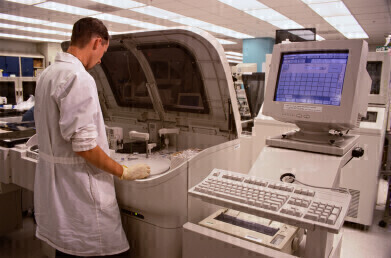HPLC, UHPLC
Solving Common Errors in HPLC
Feb 07 2023
High Performance Liquid Chromatography (HPLC) is a commonly used analytical technique in a variety of fields, including pharmaceuticals, food and beverage testing, and environmental analysis. It is a highly sensitive and precise method for separating and analysing compounds in a mixture, but it is not without its potential errors.
One common error in HPLC is poor peak shape. This can be caused by a number of factors, including an improper choice of stationary phase, an incorrect flow rate, or a faulty column. To fix this issue, the first step is to identify the cause of the problem. This may involve changing the stationary phase, adjusting the flow rate, or replacing the column.
Another common error is poor peak resolution. This occurs when the peaks in the chromatogram are not well-separated, making it difficult to accurately identify and quantify the compounds in the sample. Poor peak resolution can be caused by a number of factors, including a low quality column, a poorly designed method, or a sample that is too complex. To fix this issue, the first step is to optimise the separation method by selecting the appropriate stationary phase and flow rate. If the problem persists, it may be necessary to use a different type of column or to alter the sample preparation method.
Other common errors in HPLC include poor reproducibility, low sensitivity, and baseline drift. Poor reproducibility can be caused by a number of factors, including variations in the sample preparation method, variations in the column temperature, or variations in the flow rate. To fix this issue, it is important to carefully control all of these variables and to use a high-quality column. Low sensitivity can be caused by a number of factors, including a low sample concentration, a high level of noise in the system, or a poorly designed method. To fix this issue, it may be necessary to improve the sample preparation method, to reduce the noise in the system, or to optimise the separation method. Baseline drift can be caused by a number of factors, including a poorly maintained system, a faulty detector, or a leaking column. To fix this issue, it is important to regularly maintain the system, to ensure that all components are in good working order, and to carefully check the column for any signs of damage or leakage.
In summary, common errors in HPLC include poor peak shape, poor peak resolution, poor reproducibility, low sensitivity, and baseline drift. To fix these issues, it is important to carefully identify the cause of the problem and to take appropriate corrective actions. This may involve optimising the separation method, improving the sample preparation method, maintaining the system, or replacing faulty components.
More information online
Events
May 11 2025 Vienna, Austria
May 18 2025 Tempe. AZ, USA
May 21 2025 Birmingham, UK
Jun 01 2025 Baltimore, MD, USA
Jun 15 2025 Bruges, Belgium














